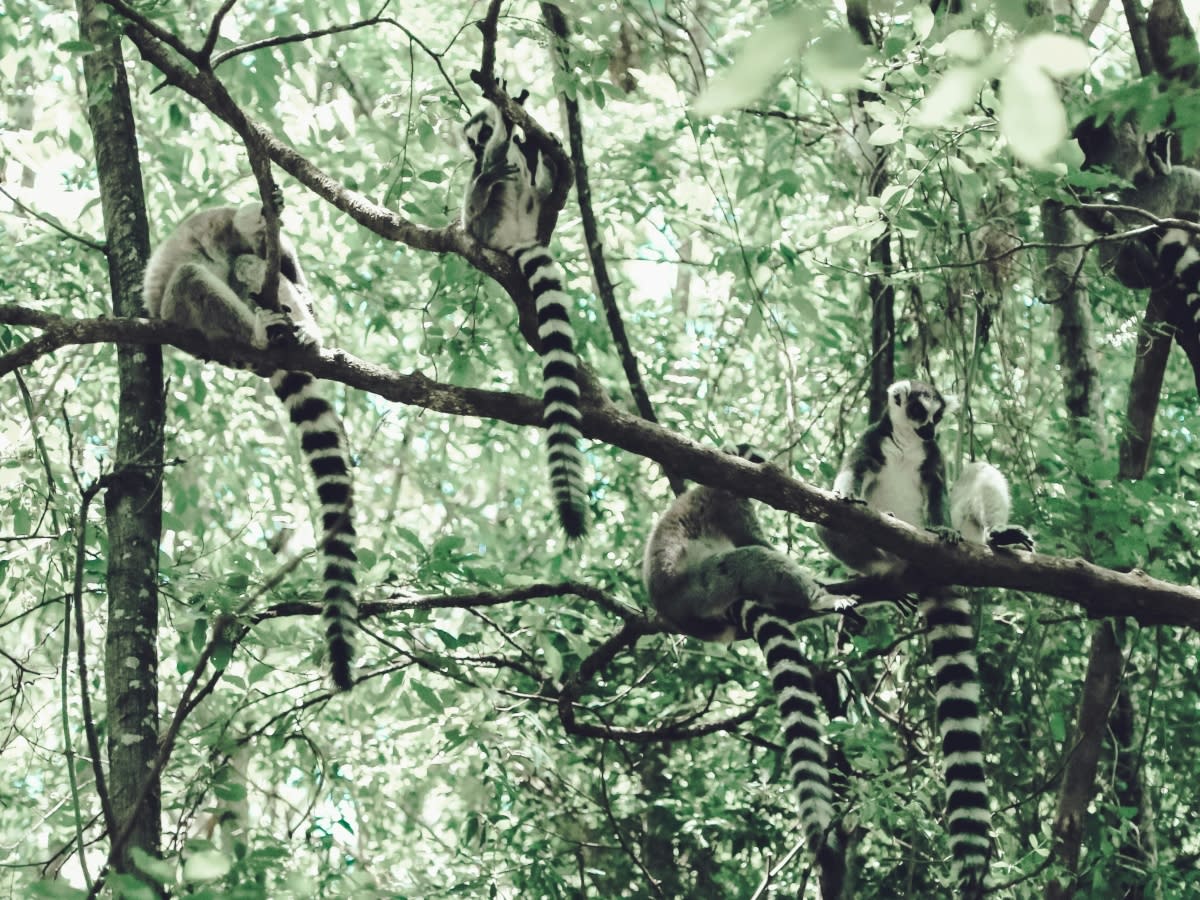Here’s How To Explore The Andrefana Dry Forests of Madagascar

A trip to Madagascar’s Andrefana Dry Forests is like stepping into an ancient and surreal world. As soon as you set foot in this secluded region of southwest Madagascar, you will be swept away by geological formations and tranquil salt flats that reflect the sky above. A UNESCO World Heritage Site, the Andrefana Dry Forests allow visitors to meander through lush ecosystems searching for fascinating species and rare baobab trees.
Lemurs dangle from tree to tree gracefully, chameleons disappear into their environments, and flamingos’ vibrant pink plumage makes for a breathtaking sight. However, there’s more to a visit to these arid woods than meets the eye; it’s an opportunity to learn about conservation in action, and it’s important to do this properly.
1. Tsingy de Bemaraha National Park
To get things rolling, head to Tsingy de Bemaraha National Park, a geological wonder famous for its enormous dagger-shaped limestone formations. The word “Tsingy” actually means “where one cannot walk barefoot” in Malagasy, so bring your hiking boots or prepare for a toe-stubbing frenzy. Make your way through the dangling bridges and gorges, discover secret caverns, and be amazed by the unearthly scenery that has brought this park its UNESCO designation.
2. Tsimanampetsotsa National Park
Next, trade the towering tsingy for serene salt flats at Tsimanampetsotsa National Park. Despite its serene appearance, this park hides many a surprise. Venture into the cathedral-like caves, where underground lakes mirror the starry night sky above. Observing the resident flamingos as they transform the salt water into a colorful pink sea is another enjoyable experience. Bring your binoculars and camera because this is a birdwatcher’s dream.
3. Ankarafantsika National Park
Upon entering Ankarafantsika National Park, you’ll see some of Madagascar’s most famous animals, including lemurs, hanging gracefully through the trees. Among these are the curious brown lemurs and the elusive Coquerel’s sifaka. The bright Madagascar fish eagle is just one of more than 130 bird species seen at Ankarafantsika, making it a paradise for birdwatchers. One of the park’s highlights is the chance to spot the fossa, Madagascar’s largest predator. These cat-like creatures are a prized sighting for wildlife enthusiasts.
4. Mikea Forest
What truly makes the Mikea Forest a must-visit destination is its inhabitants – the enigmatic Mikea people. These nomads have mastered the art of survival in this challenging environment, and you can join them on a journey through their way of life. Your visit is a chance to gain insights into Mikea’s sustainable practices and their deep connection to the land. As you learn about their nomadic traditions and engage in cultural exchanges, you’ll leave with a newfound appreciation for humanity and nature.
5. Analamerana Special Reserve
Located in the island’s northern reaches, Analamerana is where you’ll find lush rainforests, serene lakes, and limestone formations. However, the real stars of the show are the lemurs. Watch as they swing through the trees, leap from branch to branch, and show off their lemur-y charm. Analamerana is also home to an array of avian wonders, from the colorful Madagascar bee-eater to the evasive Van Dam’s vanga.
6. Ankarana Special Reserve
Prepare to be dazzled by the Tsingy limestone formations here. These towering spires will make you feel like you’ve entered the set of a fantasy movie. You’ll find hidden caves adorned with ancient stalactites and stalagmites inside these rocky labyrinths. As you venture deeper into the abyss, flashlight in hand, channel your inner explorer.
As for logistics, here are some tips to make the most of your Andrefana Dry Forests adventure:
Timing Is Everything: Visit during the dry season, from April to November, to avoid the rain and fully enjoy your outdoor explorations.
Guided Tours: Consider hiring a local guide who knows the ins and outs of the forests. They can help you spot elusive creatures and provide valuable insights into the ecosystem.
Pack Smart: Bring sturdy hiking boots, insect repellent, and a good camera.
Respect the Environment: Remember, you’re a guest in these natural wonders. Stay on designated paths, avoid disturbing wildlife, and leave no trace behind.

